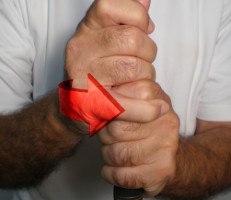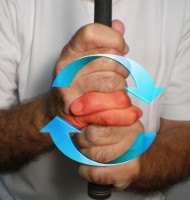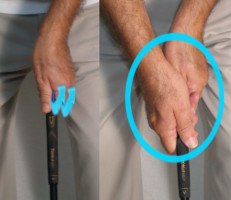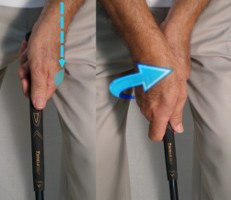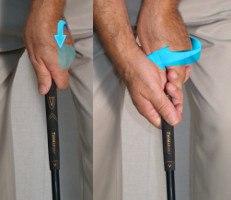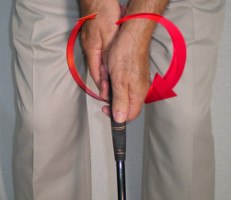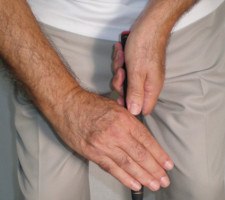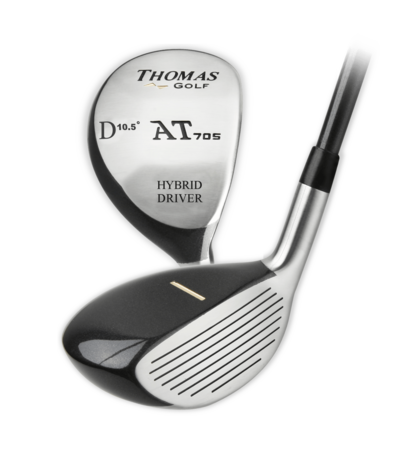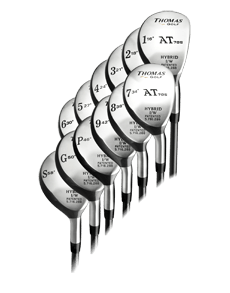|
Pros and Cons of Every Golf Grip Style |
Best Grip? Overlapping vs Interlocking |
Grip style: Interlocking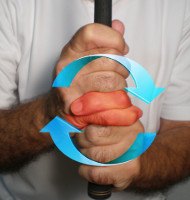 |
Hand position: Slightly strong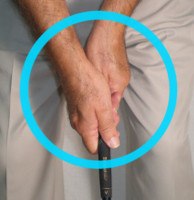 |
Putting grip style / hand position: Reverse overlap / neutral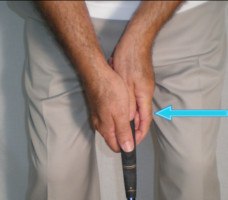 |
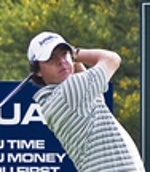
The rare “Next Big Thing” who fulfills that label’s promise, Rory McIlroy is as natural a swinger of the golf club as you’ll ever see. It all starts with the Northern Irishman’s grip.
Rory McIlroy grip features a slightly strong left hand position, which promotes freedom of movement in the arms and shoulders as he sweeps the club to the top and down into the ball. While this grip position leaves him somewhat vulnerable to the occasional hook (see his ill-fated tee shot on No. 10 in the final round of the 2011 Masters), the tradeoff is well worth it. A weaker grip position could sap some of McIlroy’s power and prevent him from hitting his favored shot, the high draw.
In winning the U.S. Open, PGA Championship and Open Championship by age 25, McIlroy joined Jack Nicklaus and Tiger Woods as the youngest the achieve that feat. He’s got something else in common with them, too: an interlocking grip.
On the greens, Rory McIlroy grip has changed to match the teachings of putting guru Dave Stockton. McIlroy employed an unconventional style in his early years, but switched to a neutral, reverse-overlap putting grip in 2011. Holding the putter this way helps him keep the back of his left hand square to the target line through impact – the key to Stockton’s method.
Up Date: Rory McIlroy is one of the most successful and talented professional golfers of his generation. His grip is a key element of his swing, contributing to his powerful and consistent ball striking. Let's take a closer look at the characteristics and key points of Rory McIlroy's grip:
- Neutral Grip: Rory McIlroy employs a neutral grip, which means his hands are positioned in a way that allows the clubface to be square at impact. This grip helps promote a more consistent and accurate ball flight.
- Strong Left Hand Position: Rory places his left hand on the club with a slightly stronger grip. This means his left hand is rotated slightly to the right (clockwise for a right-handed golfer) on the grip. This grip promotes a more stable clubface and helps generate power through impact.
- Left Hand V: Rory maintains a distinct “V” shape formed by his left thumb and index finger. This V points towards his right shoulder, indicating a stronger grip position. The V is essential for consistent clubface control throughout the swing.
- Light Grip Pressure: Rory is known for his relaxed and light grip pressure. A firm grip can restrict the natural movement of the hands and wrists, whereas a lighter grip allows for more freedom and fluidity in the swing. This light grip pressure promotes better clubhead speed and a more natural release through impact.
- Placement of the Right Hand: Rory's right hand complements his left hand grip. He places his right hand in a neutral position, with the lifeline of his right hand resting comfortably on top of his left thumb. This position allows for proper wrist hinge and facilitates a solid release of the clubhead.
- Connection between Hands: Rory focuses on maintaining a solid connection between his hands throughout the swing. This connection ensures that his hands work together as a unit, promoting a synchronized and efficient swing motion.
- Finger Placement: Rory's fingers wrap comfortably around the grip, with no excessive tension or gripping pressure. This allows for better control and feel of the club during the swing.
- Consistency in Grip: One of the key aspects of Rory McIlroy's grip is its consistency. He strives to replicate his grip position shot after shot, which contributes to his overall swing consistency and ball-striking prowess.
- Adaptability: While Rory's grip remains relatively consistent, he can make slight adjustments depending on the shot he intends to play. He may modify his grip for specialty shots, such as fades or draws, to create the desired ball flight.
- Personal Comfort: It's important to note that grip preference can vary among golfers, and what works for Rory McIlroy may not suit everyone. Golfers should experiment with different grip positions to find the one that feels most comfortable and allows for optimal performance.
Rory McIlroy's grip is a key component of his successful golf swing. The neutral grip with a slightly stronger left hand position, light grip pressure, and emphasis on hand connection contribute to his ability to generate power, control the clubface, and produce consistent results. Golfers can learn from these grip characteristics and adapt them to their own swings to improve their overall performance on the course.
